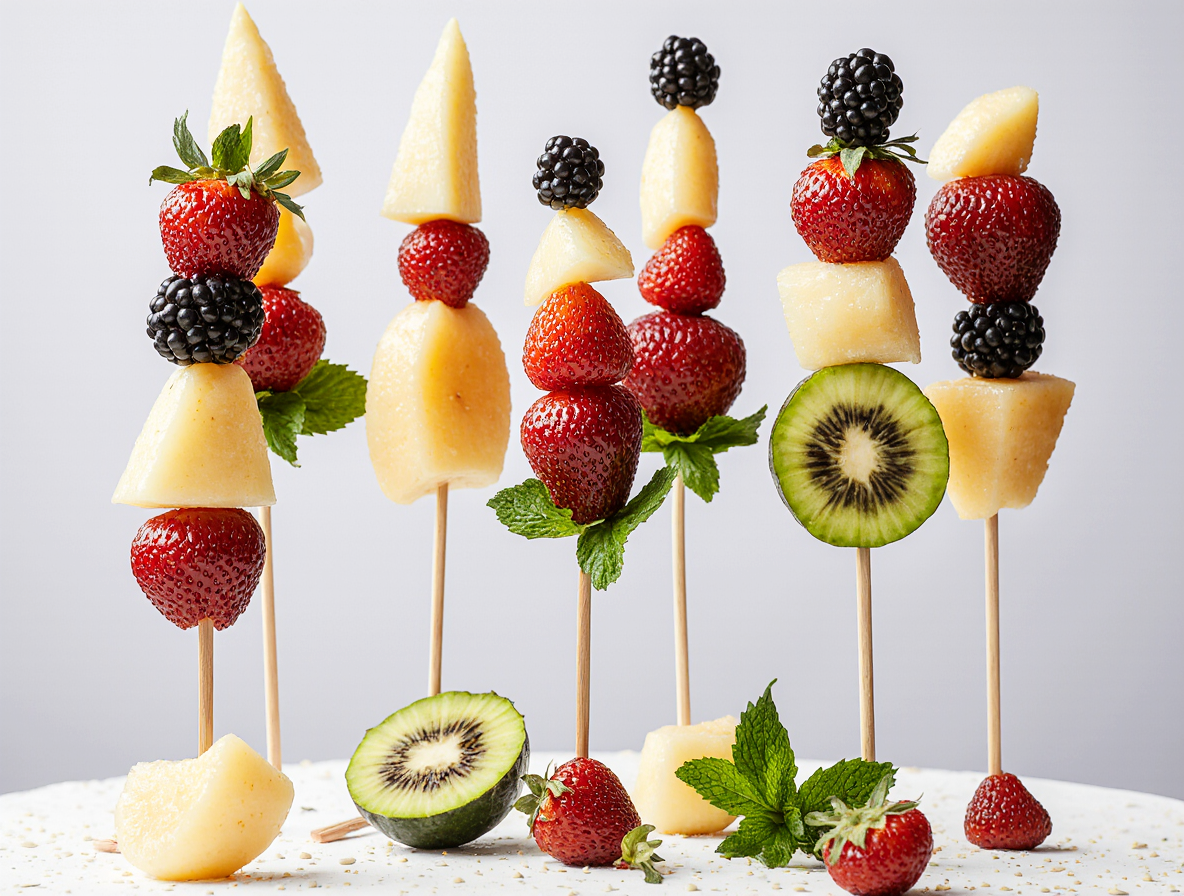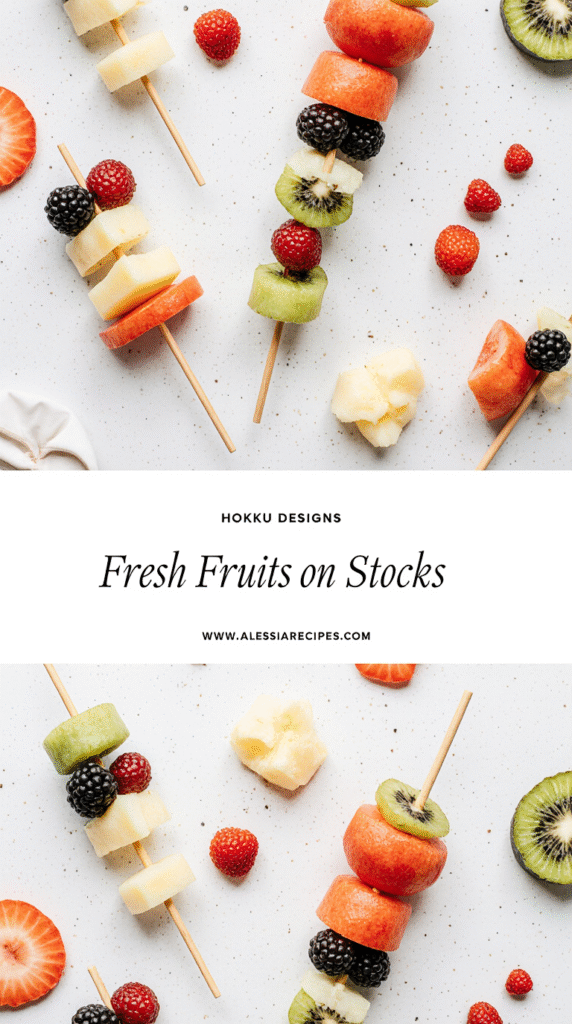How to Make Perfect Fruit on a Stick: Expert Tips for Party-Ready Treats
Fruit on a stick might sound simple, but surprisingly, these colorful treats can transform any gathering into a memorable event. When I first started making fruit skewers for parties, I was amazed at how these easy-to-prepare snacks could be both nutritious and visually stunning. At just 235 calories per serving with 0g of fat, these treats are perfect for health-conscious guests. Additionally, they’re incredibly quick to prepare—taking only 10 minutes of active time.
Throughout my experience creating fruit sticks for parties, I’ve discovered numerous fruit stick ideas that work for any occasion. Furthermore, these versatile treats fit various dietary needs, being naturally vegan, gluten-free, and paleo-friendly. However, the real magic happens when you master fruit kabob display ideas that elevate your presentation from basic to breathtaking. In this guide, I’ll share my best techniques for choosing fruits, assembling perfect skewers, and creating impressive fruit kabob displays that will have your guests reaching for seconds before they’ve finished their firsts.
Choosing the Right Fruits for Skewers
Selecting the perfect fruits for your skewers involves more than just grabbing whatever’s in your fruit bowl. The most successful fruit sticks primarily feature fruits that maintain their appearance and texture over time.
When creating beautiful fruit on a stick arrangements, I always prioritize fruits that don’t brown quickly. For instance, strawberries, pineapple chunks, melon balls, seedless grapes, kiwi slices, and mango stay vibrant longer. These sturdier options also hold up better during preparation and serving, especially important for party settings where skewers might sit out for a while.
Although bananas taste delicious on skewers, they oxidize rapidly. The same goes for apples and pears – these fruits turn brown quickly and appear unappetizing. If you really want to include these fruits, there’s a solution: add a splash of lemon juice to slow down the browning process. For bananas specifically, keep the peel intact until just before serving.
Creating visually striking fruit kabobs means thinking about color variety. I often plan my selections based on rainbow hues to create eye-catching displays. Red strawberries, orange mango or cantaloupe, yellow pineapple, green kiwi, blue blueberries, and purple grapes make a stunning color progression.
Size matters too! Cut pieces large enough so they won’t fall off the skewer. For uniform appearance, try cutting fruits into similar-sized chunks, typically cubes. Keep small fruits like grapes, blueberries, and blackberries whole.
Consider texture combinations as well. Firmer fruits like melons and strawberries are easiest to skewer. Mix and match different textures for an interesting mouthfeel – the juicy burst of a grape alongside the denseness of pineapple creates delightful contrast.
Finally, consider seasonal availability for the freshest options. While strawberries are available year-round, other fruits have peak seasons when they taste their best. Fresh fruit generally works better than frozen, though heartier frozen fruits like pineapple, mango, and strawberries can work if they’re already in large chunks.
How to Assemble Fruit on a Stick Like a Pro
The actual assembly of fruit on a stick requires precision and creativity beyond just pushing fruit onto skewers. First, properly prepare your workspace by gathering all necessary equipment—bamboo skewers, a cutting board, and a baking sheet to hold finished skewers.
Begin with thorough preparation of your ingredients:
- Wash and completely dry all fruits
- Cut larger fruits into bite-sized pieces, typically 1-inch thickness
- Ensure pieces are thick enough to stay secure on skewers
- For fruits that oxidize (apples, bananas, pears), soak them in citrus juice
Once preparation is complete, the actual threading technique matters significantly. Place firmer fruits at the bottom to create a stable base. Thread fruits tightly and securely to prevent them from falling off. Consider alternating colors and textures for visual appeal. Indeed, many professionals recommend creating patterns—rainbow arrangements are particularly popular with red strawberries at the bottom, followed by orange segments, yellow pineapple, green kiwi, and finishing with blueberries.
Moreover, the presentation possibilities are endless. Cookie cutters transform ordinary fruit into stars, flowers, or hearts—melons and pineapple work exceptionally well for shape-cutting. For safety, particularly with children’s servings, always end with a strawberry or other rounded fruit to cover sharp ends.
Beyond basic assembly, consider incorporating fresh herbs like mint or basil between fruit pieces. These additions not only enhance visual appeal yet also introduce complementary flavors.
For parties, create themed skewers using holiday colors—red and green for Christmas or red, white, and blue for patriotic celebrations. Alternatively, create a stunning centerpiece by arranging skewers in a fan shape or standing upright in a sturdy vase.
Remember that fruit kabobs can be made up to 12 hours ahead and refrigerated—just save any oxidizing fruits until right before serving for the freshest appearance.
Expert Tips for Displaying and Serving at Parties
The presentation of your fruit skewers can make or break your party spread. Creating showstopping fruit kabob displays requires minimal effort yet delivers maximum visual impact.
For vertical presentations, transform a hollowed-out watermelon half into an impressive display base. Simply poke skewers into the rind, starting from the center and working outward in a bouquet-like arrangement. Alternatively, insert skewers into floral foam placed inside a decorative vase or glass for an elegant “fruit bouquet” effect. These standing displays create dimension and drama on your buffet table.
For horizontal arrangements, place skewers on a platter in fan shapes or rainbow patterns. Staggering different types of skewers adds visual interest. Consider themed arrangements—red, white, and blue fruits for patriotic celebrations or rainbow patterns for St. Patrick’s Day.
Preserving freshness remains crucial for party-ready fruit sticks. For make-ahead preparation:
- Assemble skewers up to 24 hours ahead, place on paper towel-lined baking sheets, cover with plastic wrap, and refrigerate
- Spray oxidation-prone fruits with equal parts lemon juice and cold water
- Place assembled skewers in airtight containers filled with cold water to maintain freshness
Transportation concerns? Secure your fruit on a stick creations in stable containers with lids. For outdoor events, place skewers on ice to prevent them from becoming soggy in warm weather.
Elevate your presentation further by pairing with dipping options. Popular choices include chocolate sauce, yogurt-based dips, or cream cheese fruit dips. For Greek yogurt dip, mix one cup Greek yogurt with two tablespoons honey and half teaspoon vanilla extract.
Most importantly, consider your audience when designing displays. Creative arrangements like fruit “porcupines” or themed presentations consistently generate compliments. Even simple touches—like using cookie cutters to create star-shaped melon pieces—delight children.
Remember that impaling fruit on sticks isn’t merely practical—it’s playful! This festive approach makes healthy options more appealing, encouraging guests to reach for nutritious treats throughout your event.
Conclusion
Fruit on a stick truly offers the perfect combination of visual appeal and nutritional value for any gathering. Throughout this guide, we’ve explored how these colorful treats can transform ordinary parties into memorable events while providing health-conscious options for guests. After all, at just 235 calories per serving with zero fat, these vibrant skewers prove that healthy eating needn’t be boring.
Remember that successful fruit kabobs begin with smart fruit selection. Strawberries, pineapple, melons, grapes, and kiwi not only create rainbow-worthy displays but also maintain their appearance throughout your event. Though some fruits like bananas and apples present oxidation challenges, simple solutions like lemon juice help preserve their appearance.
Assembly techniques matter significantly when creating professional-looking skewers. Placing firmer fruits at the bottom, creating deliberate color patterns, and ensuring tight threading transforms simple ingredients into eye-catching treats. Cookie cutters add another dimension of creativity, allowing shapes that delight guests of all ages.
Presentation elevates these treats from simple snacks to showstopping centerpieces. Whether displayed vertically in a hollowed watermelon or arranged in rainbow patterns on platters, thoughtful arrangements catch everyone’s attention. Additionally, pairing your skewers with dipping options like chocolate sauce or yogurt dips enhances the experience for your guests.
Best of all, these party-ready treats require minimal preparation time while delivering maximum impact. The next time you host a gathering, consider how fruit on a stick can bring color, nutrition, and fun to your table. My experience has shown that even the simplest fruit arrangements consistently generate compliments and empty platters by the end of the night!
FAQs
Q1. How far in advance can I prepare fruit skewers for a party? You can prepare fruit skewers up to 24 hours before your event. Assemble them, place them in a single layer on a paper towel-lined baking sheet, cover with plastic wrap, and refrigerate until you’re ready to serve.
Q2. What are the best fruits to use for fruit kabobs? The best fruits for kabobs are those that maintain their shape and color, such as strawberries, pineapple chunks, melon balls, seedless grapes, kiwi slices, and mango. These fruits not only create visually appealing skewers but also stay fresh longer.
Q3. How can I prevent fruits like apples and bananas from browning on skewers? To prevent browning, you can brush these fruits with a mixture of lemon juice and water. This simple solution helps slow down the oxidation process, keeping the fruit looking fresh for longer.
Q4. What are some creative ways to display fruit skewers at a party? There are many creative display options for fruit skewers. You can arrange them in a hollowed-out watermelon half, create a “fruit bouquet” by inserting skewers into floral foam in a vase, or arrange them in fan shapes or rainbow patterns on a platter. For themed events, consider color-coordinated arrangements.
Q5. Are there any dipping sauces that pair well with fruit skewers? Yes, several dipping options can enhance the fruit skewer experience. Popular choices include chocolate sauce, yogurt-based dips, and cream cheese fruit dips. For a simple and delicious option, try mixing Greek yogurt with honey and vanilla extract.


